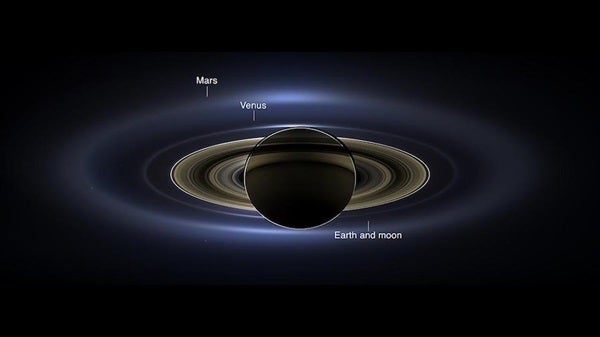Saturn appears nearly due south and at its highest altitude as darkness falls in early September.
The ringed planet shines at magnitude 0.4, more than a full magnitude brighter than any of the background stars in its host constellation, Sagittarius.
Saturn’s slow westward motion against this rich Milky Way backdrop comes to a halt today.
Center the planet in your binoculars and you’ll see the Lagoon Nebula (M8) 2.2° to the southwest and the Trifid Nebula (M20) 1.7° to the west-southwest. But the best views come through a telescope. Even the smallest instrument shows Saturn’s 17″-diameter disk surrounded by a dramatic ring system that spans 39″ and tilts 27° to our line of sight.










